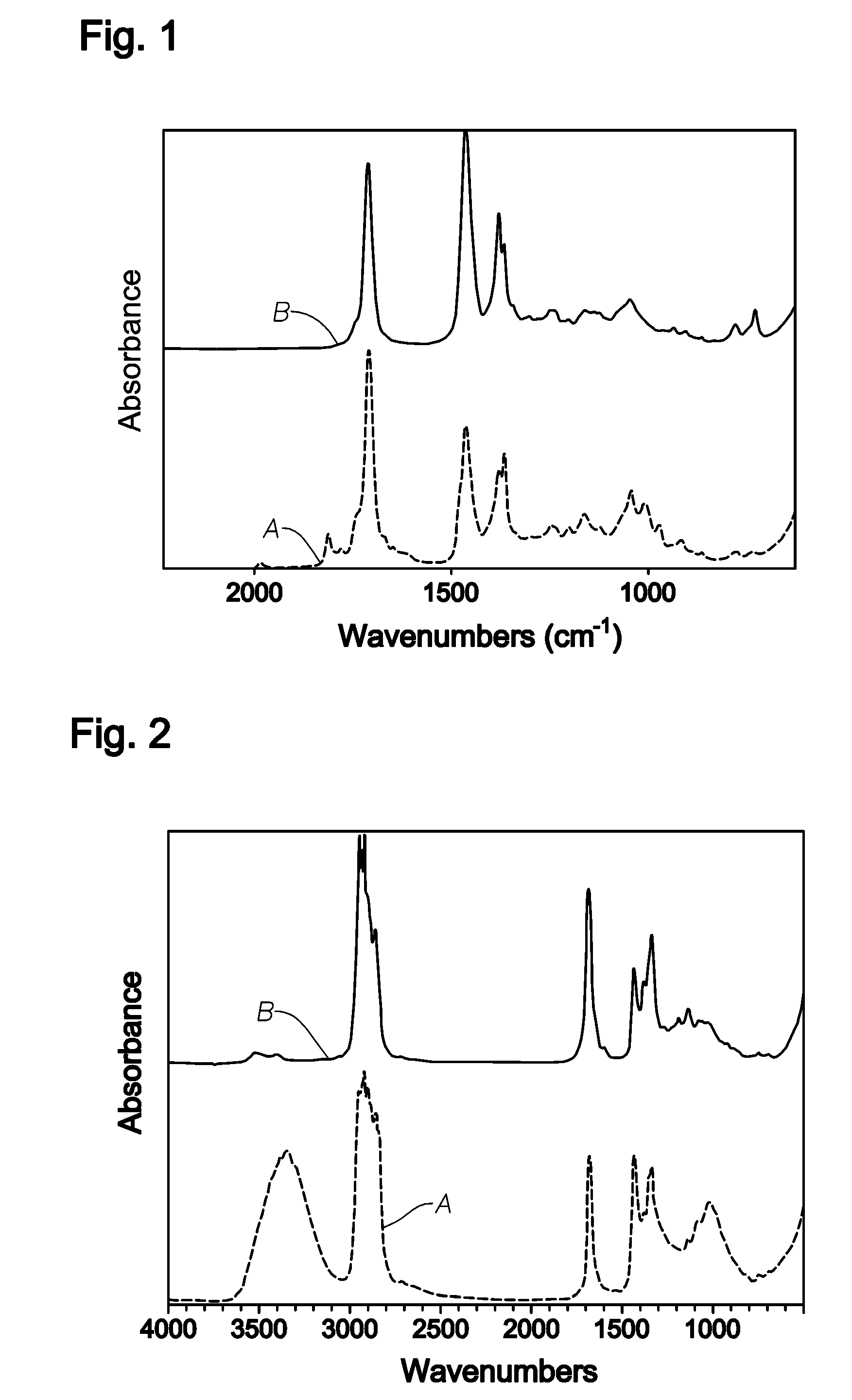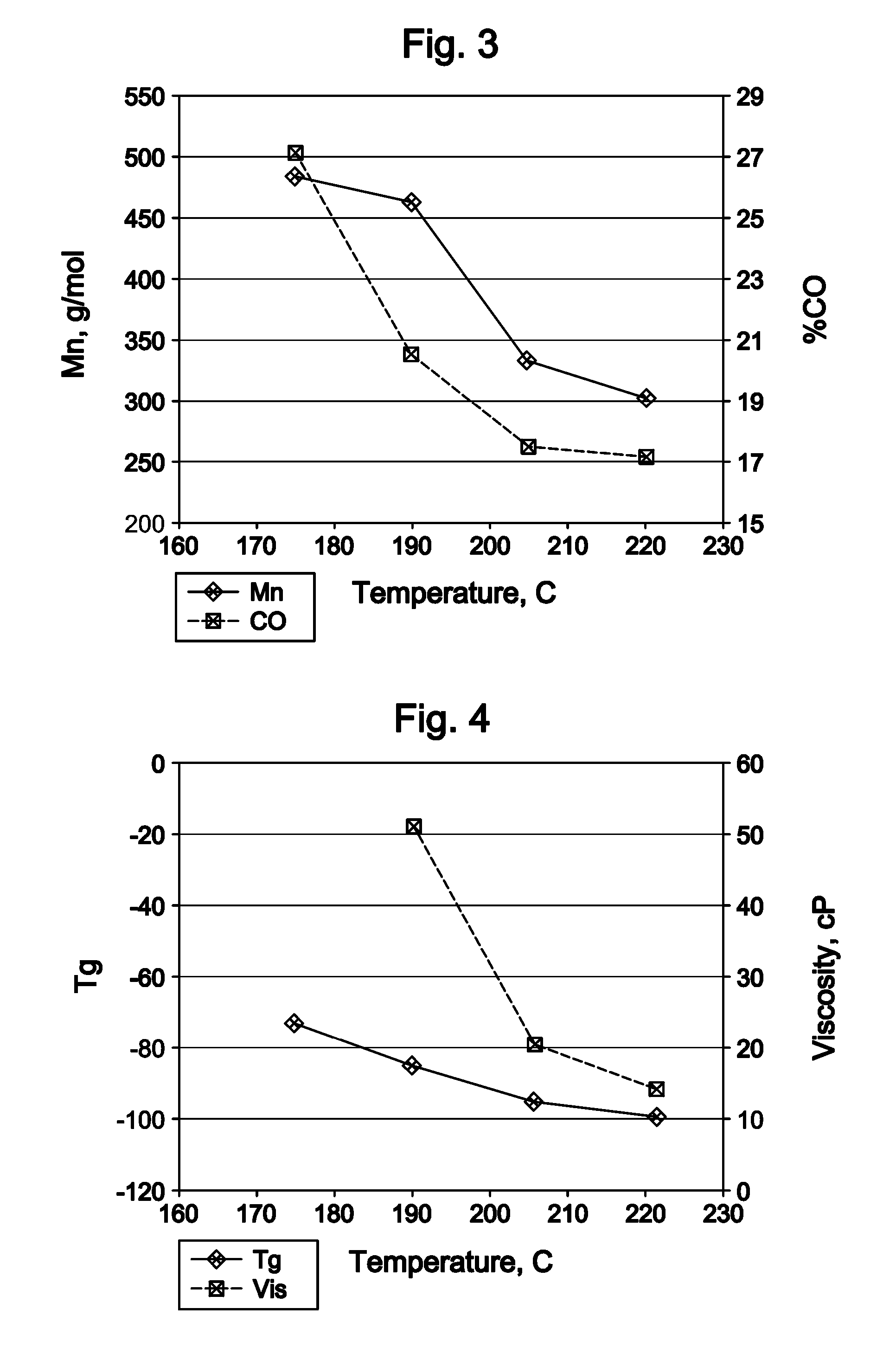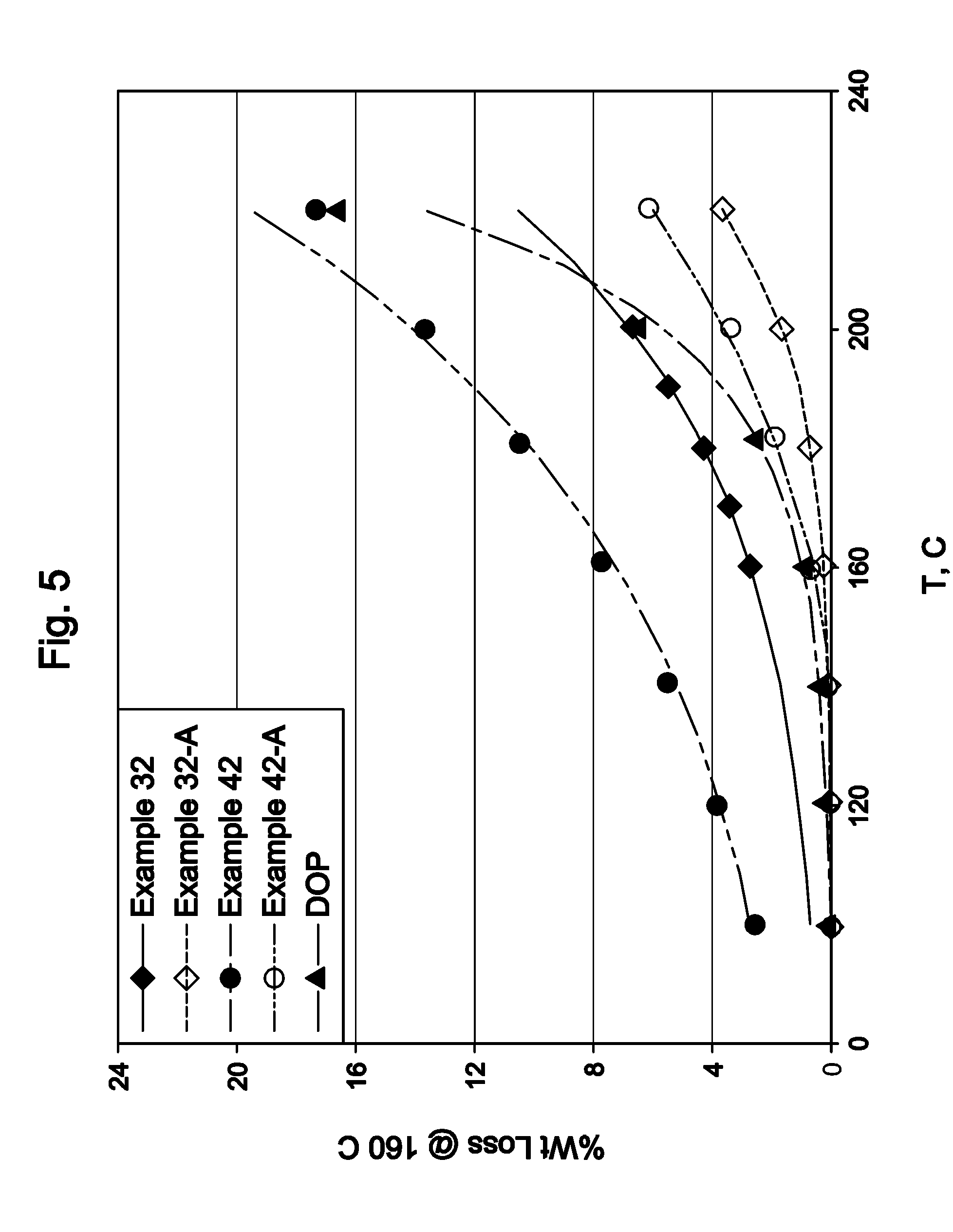Polyketone Plasticizers
a technology of polyketone and plasticizer, which is applied in the field of polyketone compounds, can solve the problems of not being generally useful in replacing phthalates in polymer systems such as pvc, not being available in sufficient quantity, and high cost, and achieves the effect of eliminating the color of product oligomers
- Summary
- Abstract
- Description
- Claims
- Application Information
AI Technical Summary
Benefits of technology
Problems solved by technology
Method used
Image
Examples
example 1
Synthesis of Polyketone Oligomers According to the Present Invention Using Raff-II Feed and CO
[0047]A 300-mL Autoclave Engineer's reactor was charged with 150-ml pure n-hexane and 0.64 g of a 75% solution of t-butyl peroxypivalate in mineral spirits. The reactor was sealed and purged with purified nitrogen. The reactor was then pressurized with 10.5 g of Raff-II feed (Raff-II Feed: 1-Butene: 60.49%, cis-2-butene: 17%, trans-2-butene 17%, isobutylene: 5.51% and butadiene: 5237 ppm). Temperature was raised to 66° C. while stirring, and the pressure was maintained for 24 hours. The reactor was allowed to cool to room temperature and then depressurized. The hexane solvent was removed on a rotary evaporator leaving 1.33 g of orange brown liquid product. The IR spectrum of the product is shown in FIG. 1 (bottom spectrum labeled A). The IR spectrum of the polymer showed a very strong peak at 1709 cm−1 due to carbonyl group. The IR also showed small peaks at 1813 and at 1649 cm−1. The peak ...
example 2
Hydrogenation of Polyketone Oligomers
[0048]The reactor was loaded with 2.0 g of orange brown polyketone oligomer product prepared by a procedure similar to discussed in the Example 1 along with 80 ml of heptane and 2.5 g of 5% palladium on barium sulfate. The reactor was pressurized and vented three times with 500-kPa nitrogen and three times with 3000 kPa hydrogen. The reactor was then pressurized with 3500 kPa hydrogen and heated with 120° C. for 1 hour. The solution was filtered and evaporated on a rotary evaporator to obtain colorless polyketone liquid product. The IR spectrum of the product is shown in FIG. 1 (top spectrum labeled B). The IR spectrum of the polymer showed a very strong peak at 1709 cm−1 due to carbonyl group. The IR also showed small peaks at 1813 and at 1649 cm−1 disappeared after mild hydrogenation.
examples 3-7
Synthesis of Polyketone Polymers Using Ethylene, Carbon Monoxide and Butene Feed
[0049]The oligomeric products were prepared in a 1000-ml Autoclave Engineer's batch autoclave. The reactor was purged with nitrogen before each experiment to exclude air. The reactor was charged with acetone solvent and the monomers then were heated to the reaction temperature. The reaction was initiated by injecting a solution of a peroxide radical initiator, such as tert-butyl peroxide (TBP). The reactor pressure was maintained by continuously feeding a blend of CO and ethylene through a pressure regulator valve into the reactor. The feed was a blend of ethylene and CO in a ratio of ethylene:CO of 1:1. The reaction temperature was maintained at 175° C. After the gas consumption could be no longer detected indicating the end of the reaction, the reactor head gas was vented and the liquid containing the product was drained into a collection vessel. In order to recover the product, the solvent was removed...
PUM
| Property | Measurement | Unit |
|---|---|---|
| Tg | aaaaa | aaaaa |
| Tg | aaaaa | aaaaa |
| Tg | aaaaa | aaaaa |
Abstract
Description
Claims
Application Information
 Login to View More
Login to View More - R&D
- Intellectual Property
- Life Sciences
- Materials
- Tech Scout
- Unparalleled Data Quality
- Higher Quality Content
- 60% Fewer Hallucinations
Browse by: Latest US Patents, China's latest patents, Technical Efficacy Thesaurus, Application Domain, Technology Topic, Popular Technical Reports.
© 2025 PatSnap. All rights reserved.Legal|Privacy policy|Modern Slavery Act Transparency Statement|Sitemap|About US| Contact US: help@patsnap.com



